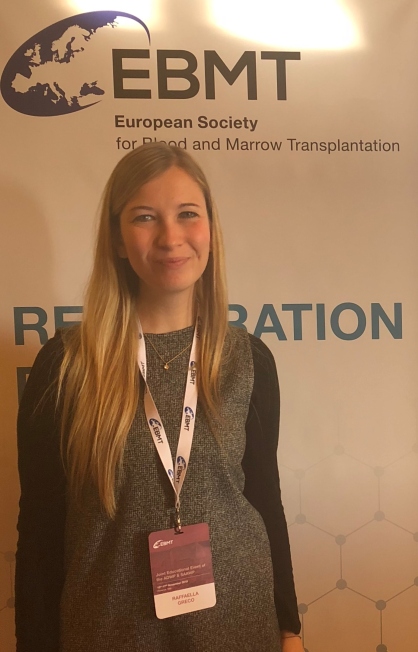
15-17 November 2018 in Florence, Italy
Raffaella Greco, ADWP Definitions Committee Representative, outlines the key moments of the Joint Educational Meeting.
The ADWP & SAAWP Educational Meeting was held in the beautiful and historical Florence. The meeting was very well organised, with attendees from many countries, giving a great perspective on the application of HSCT to severe autoimmune diseases, aplastic anaemia and other bone marrow failure disorders.
The presentations covered a wide range of topics, offering a great opportunity to communicate and share scientific excellences from the experts.
The talks were divided into sections, ranging from detailed recommendations to encouraging and innovative reports.
The ADWP session provided an excellent overview of the immunological mechanisms of HSCT for these peculiar diseases. Results from a 20 years experience with transplant for severe autoimmune diseases were presented, providing also evidence-based guidelines and recommendations. Patient selection, experience of the centre and appropriate conditioning regimen according to disease, age and patient fitness, emerged as major key points in this setting. A general session and subsequent parallel sections for disease-specific topics (MS, SSc, Crohn’s disease, and other neurological or rheumatological diseases) generated questions, comments, and interests.
A great new initiative at this meeting was the Nurses Session, with informative presentations on the complex care needs of those undergoing HSCT for MS, SSc, Crohn’s disease and the issue of stem cell tourism.
The SAAWP section provided a comprehensive overview of the current knowledge on the pathogenetic mechanisms leading to aplastic anaemia and PNH.
The burning issue of first line treatment for aplastic anaemia was addressed through a very intriguing exchange of opinions among the experts. The discussion deeply explored the role of age limit, patient fitness and donor characteristics to choice the perfect strategy (transplantation versus immunosuppression). There was a focus on new promising strategies, such as eltrombopag, and the use of alternative donors in aplastic anaemia.
Other sessions covered emerging topics like the new drugs for PNH, state-of-the-art in immune cytopenias or use of HSCT in specific bone marrow failure disorders.
The meeting was exciting, giving great insight into this area. It was an excellent opportunity to meet colleagues from various countries with different specialties and background, sharing ideas on recent developments in the field.
We look forward to encouraging physicians and nurses to attend future meetings to facilitate education and collaboration on projects relating to these specialised groups of patients.

Hematology and BMT Unit San Raffaele Scientific Institute Milano, Italy